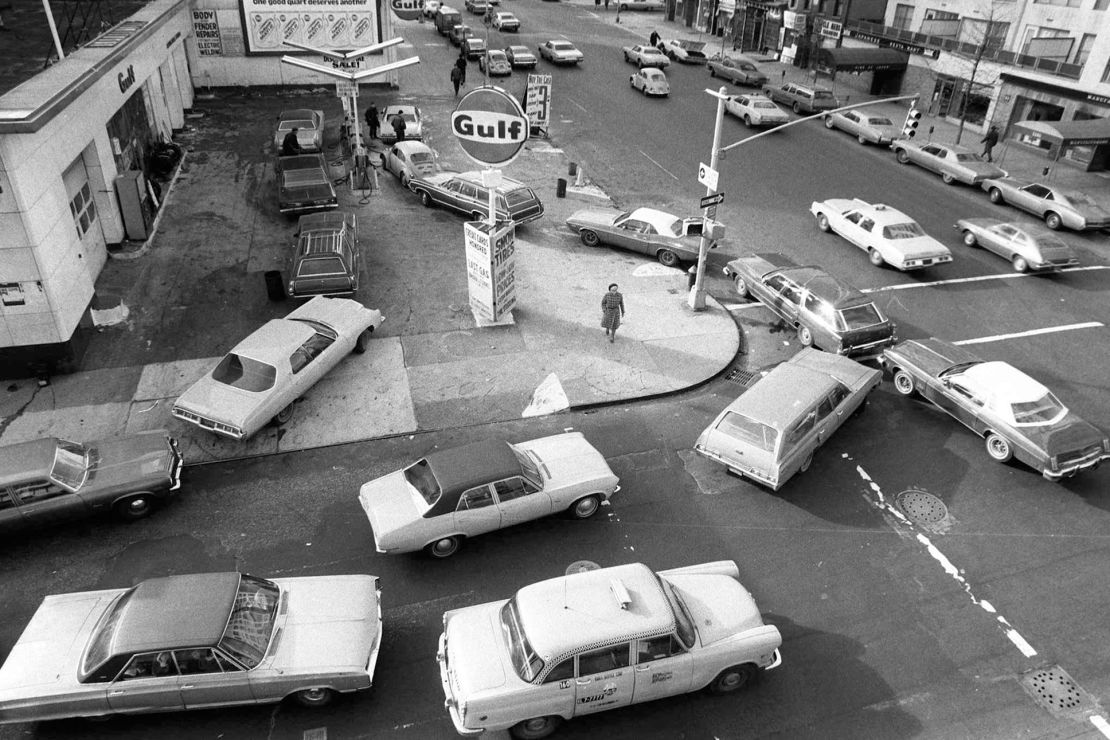Physical Address
304 North Cardinal St.
Dorchester Center, MA 02124
Physical Address
304 North Cardinal St.
Dorchester Center, MA 02124

New York
CNN
—
Jamie Dimon, the head of America’s largest bank, JPMorgan Chase—and commonly referred to as the “Chairman of Wall Street”—spent much of this past year warning. there is a great danger The US is experiencing 1970s-style stagflation, meaning economic growth stagnates while inflation heats up.
“I look at the amount of fiscal and monetary stimulus in the last five years; it has been very extraordinary; how can you tell me that it won’t lead to stagflation?”. Dimon said in a speech in May.
His prediction, however, has been predicted by many high-level economic voices; Chief among them was Federal Reserve Chairman Jerome Powellhe said in a press conference in May: “I don’t see the page or the ‘flation'”.
That, of course, was before President-elect Donald Trump won the election. Now, Americans may be facing stagflation, something the nation’s economy has not experienced in more than half a century. This time, however, driven by tariffs.
Just over a month from now, Trump will have the power to levy tariffs on other nations stroke of the pen. And once inaugurated on January 20th, he has made a commitment impose immediately A 25% tariff on Mexican and Canadian imports and an additional 10% increase in tariffs on Chinese goods.
On the campaign trail, he promised to levy a 10% to 20% tax on all imports and raise tariffs on Chinese goods by at least 60%.
There is some doubt that Trump will follow through on these plans and instead use them as a means of negotiating with other nations. However, if these significant and sweeping tariffs go into effect, it could return the US economy to one of the most painful periods it has taken more than a decade to recover from.
“I was around because of the stagflation. It was 10% unemployment. It was high single-digit inflation and very slow growth,” Powell said in May, referring to when oil prices soared during the Arab oil embargo in the 1970s.
When the Fed responded to high levels of unemployment in the 1970s by cutting rates to ease the pressure on businesses, it then had to deal with higher inflation. To combat higher inflation, central banks raised interest rates. But this led to more unemployment.
To break this vicious cycle, the Fed chose to prioritize lowering inflation by aggressively raising interest rates, even if it meant the economy would go into recession, and it did.

Today, the US economy is nowhere near the conditions the Fed was in during the 1970s and 1980s. Although it has increased during this year, At 4.2%, the national unemployment rate it is two percentage points lower than the average seen in the last 50 years.
Meanwhile, inflation has cool significantly in the last two years. It is now just a touch above the Fed’s 2% target. Getting down to that particular level has been a challenge.
In general, the economy grew annual rate of 2.8% last quarter, a slightly weaker pace than the previous quarter, but still impressive considering the Fed raised interest rates to their highest level in more than two decades to combat inflation, which hit a 40-year high two years ago. (The Fed started lowering rates earlier this year it is expected to continue to cut at this week’s meeting. However, it may take years to see the impact throughout the economy).
Trump’s tariffs are not inherently inflationary, JPMorgan’s chief U.S. economist Michael Feroli told CNN.
While Americans certainly have the ability to buy many, if not most, goods more expensively, this could essentially be a one-time increase in commodity prices, similar to an increase in sales taxes, he said. But higher tariffs can quickly fuel price increases if Americans expect higher inflation from them and demand higher wages, which in turn can cause companies to keep raising prices.
And if new tariffs are imposed “haphazardly” and “hastily” so that companies don’t have enough time to reconfigure their supply chains, it can significantly hamper economic growth, forcing companies to hold back on new investments. Feroli said that the uncertainty has increased.
Stagflation could also materialize if other nations responded with retaliatory tariffs on U.S.-produced goods, likely leading employers to lay off workers as a result, he said.
According to Feroli, the risk of stagflation in the US economy is greater now than at the beginning of the year, which is not the base case that he and the group of economists he works with are currently predicting. That’s because they don’t expect inflation to rise more than a few tenths of a percent above current levels, partly because they believe the Trump administration will give US companies enough time to respond to higher tariffs if they do go ahead.
Wells Fargo economists have a similar view to Feroli.
“These rate hikes, if enacted shortly after Inauguration Day, would deliver a modest stagflationary blow to the US economy, raising our short-term inflation outlook but also dampening our economic growth outlook,” they said in a statement released last month. Shortly after election day. “If this were to happen, the probability of a stagflation situation in our growth model would increase.”
“That said, there is tremendous uncertainty about potential future policies,” they note.